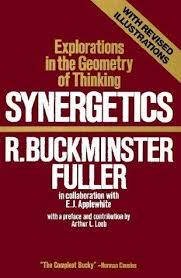In order to deal with the vast input of signals from the world around us by evolution we have developed the process of thinking. Thinking is a process of putting aside irrelevancies, so that we can focus on what is really important. Phenomena which are too big or too small are filtered out to give a so-called “considerable set” of information for our consideration. Hence per definition and by nature we deal with incomplete information, so that we can never grasp the complete truth of a phenomenon mentally.
In order to be able to filter out the relevancies, we have
developed different kinds of sieves in the form of “schemes” to organise
information in chunks which are easy to swallow.
Historically, mankind has tried to make classification
schemes based on the elementary substance nature of objects, from gross to more
subtle in the form of earth, water, fir, air and ether and based on our corresponding
senses, smell, taste, sight, feeling and hearing. In the Vedic tradition Indian
classifications add to this fivefold division Mind (Manas), Intellect (Buddhi)
and Ego (Ahamkara), resulting in an eightfold division. As we also distinguish
8 tones in a scale and 8 colours in the rainbow, often mention is made of
“octaves of existence”.
Philosophers have thought a great deal about schemes. We
know the dialectics from Hegel, in which a thesis is followed and opposed by an
antithesis, the tension of which is resolved in a synthesis accommodating
elements of both and transcending the polarities.
In more modern times we also find trialectics and quadralectics.
The Quadralectic system is strongly based on architectural and sociological
notions of how a group of people orient in the search for a settlement
(orientation), settle (determination), defend their settlement (urbanisation) and
develop into an integrated society (politeia).
Aristotle also applied a fourfold division in his analysis
of purposes (entelechia), which can be final, formal, material or efficient.
Even in the Vedic tradition we find in Patanjali’s Yoga
sutras a fourfold scheme to apprehend the world: Visesha considers the specific
objects one by one, in Avisesha via induction universal properties of a class
are assessed, Linga abstracts a phenomenon to an articulated image or glyph and
Alinga transcends the differences between the phenomena by their reductive
sameness. Besides that he proposes an eightfold system, the Asthanga Yoga, to
explore consciousness.
In my book Technovedanta I proposed a 7-step algorithm of
intelligence, which is basically twice a fourfold process, but in which I
declared the fourth state of the first set to be the first state of the second
set after a metasystem transition. This can easily be extended into an
eightfold octave scheme by including the metasystem transition itself as a
state.
I was surprised to discover recently in the book “Synergetics”
a scheme which bears great resemblance to my “algorithm for intelligence”.
Buckminster Fuller (hereinafter called “BF”), the author of “Synergetics”
describes a very useful way how we apprehend the world and come to an
understanding thereof, which he names the “Geometry of thinking”.
And not only are these notions of BF useful for our understanding
of the outside and inside world, BFs notions could actually be implemented in
artificial general intelligence.
....
More of this chapter can be found in my next book, which I have submitted for publication.
....
More of this chapter can be found in my next book, which I have submitted for publication.


No comments:
Post a Comment